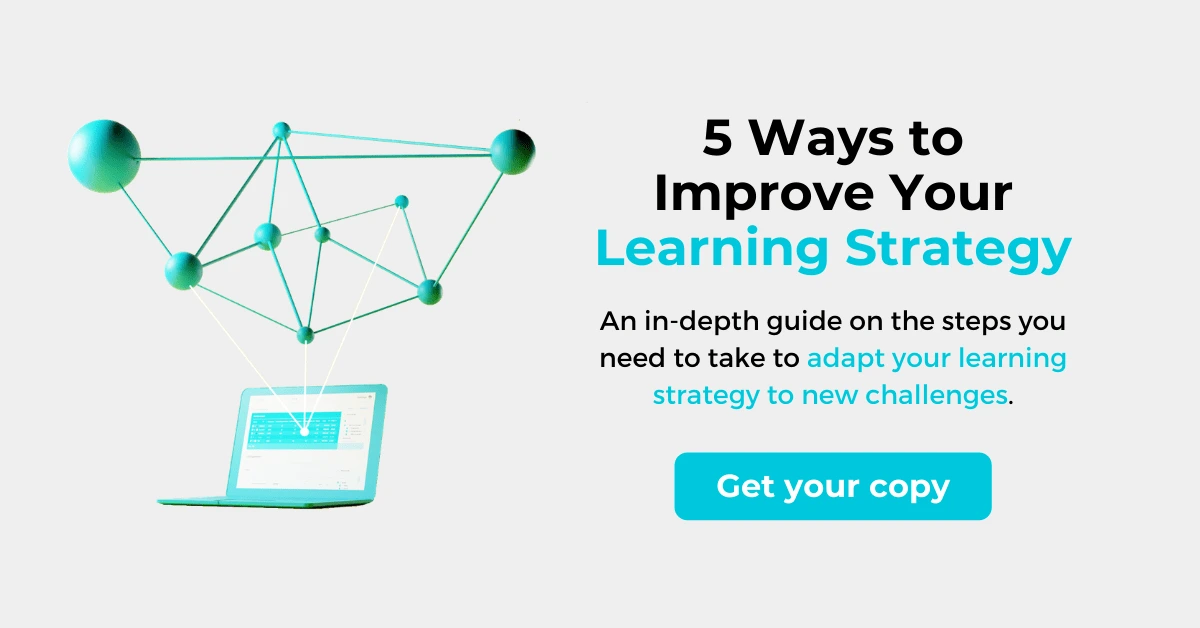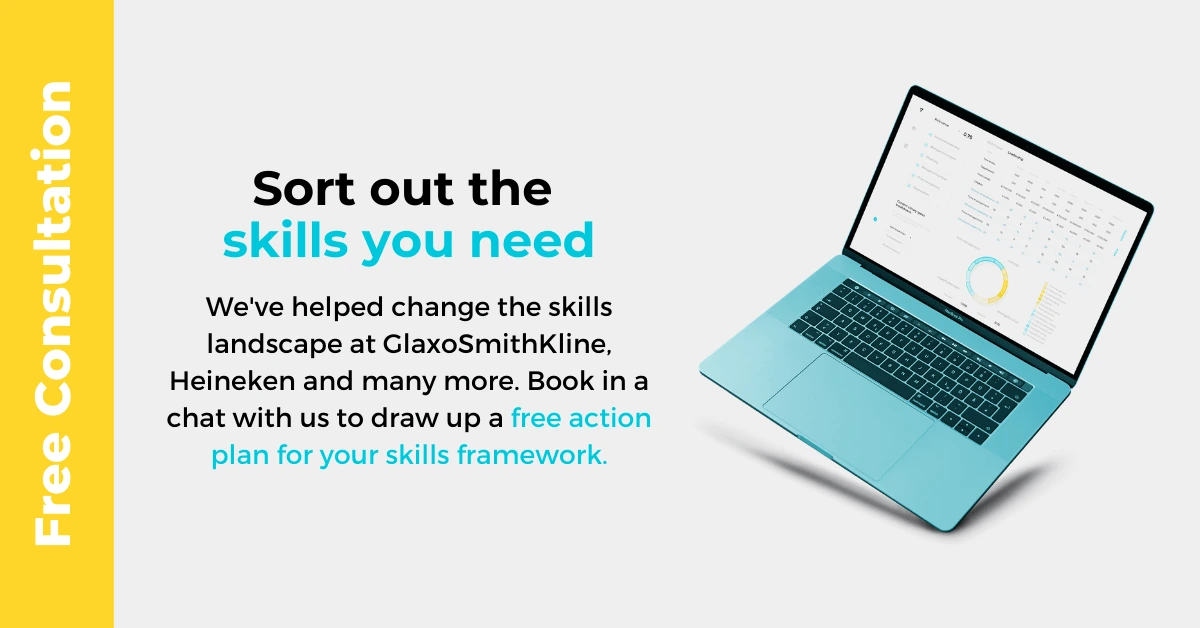Synergy. Customer journey. Deep dive. Vertical. Dynamic.
If “digital transformation” isn’t in the immediate family of these terms, it’s at least an overambitious cousin. It’s got the same maddening mix of ubiquity and vaguery. Which means it can be both a top priority for your organisation and something nobody can define.
But, behind the buzzword is an essential process. And unfortunately it’s not a “do it once” kind of thing. Like company policy or strategic direction, digital transformation requires constant updating.
The popular stat that just 1 in 7 digital transformations succeed is misleading. In fact, only 1 in 10 can be classified as failures; 60% sit somewhere between the two poles. L&D can do a few simple things to bump up a business’s chances of success. And with a task as pressing as digital transformation its role won’t go unnoticed.
Before we start (because there really are some disparate definitions of digital transformation) here’s the simple one we’re working with.
Digital transformation: a reworking of how an organization uses technology, people and processes to fundamentally change business performance
1. ‘Extension’ over ‘transformation’
Digital transformation is more about the people than the technology. This is relevant right from the genesis. Before any company decides to digitise operations and processes, it needs to diagnose the real reason it needs to transform.
This is the hard bit. The reason should be aligned with the individual organisation and represent a practical, measurable improvement. Without this, transformation efforts will get stuck at face value as employees ignore what they see as vanity metrics.
The good ones represent an extension of a brand’s purpose (hence why “transformation” isn’t a perfect term). Like when Porsche developed an individual customer tracking system to better tailor its luxury offerings; or when Dominos implemented order tracking to remove the arduous task of waiting for the doorbell; or when big logistics companies started using augmented reality to show workers the digital identities of packages as they dealt with them in warehouses.
While the overall direction will have to come from the top, all these examples show the importance of groundswell in these transformations - it’s about working with the everyday and making it better. Learning can play a part in getting the on-the-floor data needed to make transformation a natural evolution, not a forced U-turn.
2. Don’t take cooperation for granted
The assumption that digital transformations are expensive wastes corrodes cooperation. Business-wide changes live and die on everyone investing in them.
The most straightforward way to get people involved is to make sure that leadership plays a loud role in getting people to re-skill. Learning has a procrastination problem and people are less likely to put off something their boss emphasises is vital.
One company drummed up support using an effective mix of learner freedom and direction. Pitney Bowes narrowed down the skill improvement areas to 10 sections. They then let employees choose which one they wanted to improve on the most and got them to commit to that topic for a full year.
This level of freedom comes with risks (what if everyone chooses the most exciting sounding one and you’re stuck with a business full of AI experts who have forgotten how to use spreadsheets?) But, the principle of encouraging investment through freedom is a powerful tool for learning.
3. Failure is good
A culture of getting things wrong is essential to getting digital transformation to succeed. It’s the heart of the agile/scrum method that businesses use to iteratively test digital ideas.
A celebration of failure should extend to employees throughout an organisation. A McKinsey report found that, when employees try out their own digitising ideas, transformation efforts are 1.4x more likely to succeed. Encouraging this level of innovation requires de-risking risk. L&D can help ensure that this thinking is dominant in a company’s culture.
This ideology is also helps ensure that the transformations themselves come at the right time. As this article argues, companies shouldn’t wait until the need for change is apparent. They should disrupt themselves. Digital transformation is about pulling better ways to do things out of chaos. So, a company’s culture should embrace that disruption.
4. Predict where skills will go
It is a transformation. So skill requirements won’t be the same afterwards. Learning can get ahead by predicting how skills needs will change. While this will be specific to every organisation, there are three places to start looking:
Cross-departmental skills
When CarMax digitally transformed, diverse and unexpected teams sprang out of everywhere. This was by design. The CIO realised that interdepartmental communication and cross-knowledge would unlock innovative solutions and process streamlining.
Scale also matters. Laura LaBerge, a McKinsey senior knowledge expert, found that enterprise-wide digital transformations are 1.5x more likely to succeed.
L&D can help foster networks and skills overlap through shrewd curation and social learning. Leveraging new communication and collaboration technologies allows learners to share on-the-job knowledge in real time. At scale, this is a breeding ground for the kind of practical solutions transformations rely on.
What comes after the tech?
New technology isn’t the end-goal of digital transformation. New human possibilities are. Learning can pre-empt post-transformation stagnation by pinpointing the skills that’ll pull value out of the change.
“Soft” and “hard” skills are likely to mix up after a big transformation. Data analysis and technological skills tend to become more ubiquitous throughout an organisation. At the same time, automation will give some people the chance to lift their heads above the hard data. With this new freedom they’ll have more opportunities to pull strategic insights from the technology - and they’ll need the leadership skills to enact them.
What will be “unbundled”?
McKinsey warns of an “unbundling” after digital transformation as some older processes and skills become obsolete.
With this comes the danger of build-up. Transformations rely on agility and if there’s irrelevant content cluttering up an LXP/LMS learners won’t be able to find the stuff to suit their current needs. Or they won’t have the time to search.
So, putting together a robust skills framework and updating it according to new data should be part of the transformation process.
5. Transformation as a daily task
As pointed out at the start of this article, transformation is not a one-time-thing. Innovation is accelerating and keeping up with it is becoming a daily task for most organisations.
Gartner coined the “Continuous Next” back in 2018, but the term fits the key challenge that businesses are working out how to handle at the moment.
Gartner’s research vice-president advocates “culture hacking” - pinpointing the vulnerable spots in a company’s culture that can be leverage points for wholesale change. For example, this can be upending the circumstances for meetings, or the way people communicate online.
In their own ways, many strategy analysts also display an appetite for duality. McKinsey calls for a “two speed IT function” that splits IT into two parts: day-to-day maintenance and pure innovation.
Gartner suggests an organisational “digital twin”. Just as manufacturers manage physical objects like wind turbines via a real-time digital copy, Gartner proposes “taking the roof off” an organisation via a digital replication of its entire operation.
Dion Hinchcliffe, VP and principal analyst at Constellation Research, similarly considers “today's digitally-infused times, where bold action... must be done while managing the inexorable daily drumbeat” of operational realities.
If we can glean one thing from these predictions, it’s that the traditional business structure will change; constant digital transformation is set to chip off a section of the traditional organisation, whose entire function will be contending with innovation.
A new challenge for learning is finding out how to generate the right talent to make up these new organisational tangents. Then, how to keep them supplied with the wide-ranging, strategy-aligned, leading-edge learning they need to keep pace with the acceleration of change.



